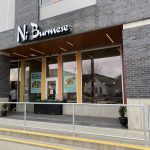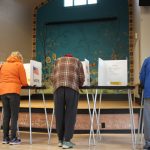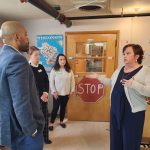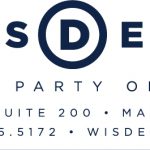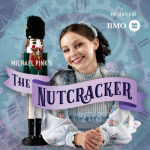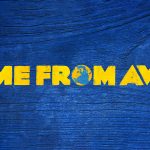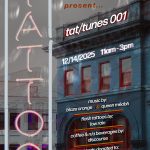Meet the Haggerty Museum’s new curator, Emilia Layden
Emilia Layden takes the educational mission of Marquette University's Haggerty Museum of Art seriously.
Meet Emilia Layden, the latest addition to the curatorial staff of Marquette University’s Haggerty Museum of Art. Or re-meet, perhaps; while Layden’s appointment to the position, most recently held by Annemarie Sawkins, was announced in December 2012, she joined the museum as an interim associate curator back in July and has already organized two exhibitions: Freedom Of/For/To and Read Between the Lines: Enrique Chagoya Codex Prints. TCD writer Mary Overman spoke to Layden about her career in the arts, and her plans with the Haggerty.
Mary Overman: How did you become a curator?
Emilia Layden: I always had an interest in pursuing a career that would allow for direct engagement with art objects and artists, and I eventually realized that curatorial work would be a good fit. While in college I had the opportunity to enroll in several courses that also allowed for practical application of some of the curatorial/art historical principles we were learning.
As a graduate student I spent a lot of time conducting research in the library and I gained a new appreciation for that aspect of a curator’s role. The curatorial field offers a great balance between rigorous intellectual engagement on the one hand and direct interaction with art objects and artists on the other. Rather than advancing an argument about a single artist’s work or a group of works via a research paper, I have the opportunity to use art objects as a conduit for a particular idea or thesis, which then takes form as a public exhibition.
EL: Lucy Lippard began her career as an art critic and went on to publish several influential books, such as Six Years: The Dematerialization of the Art Object. I admire Helen Molesworth, current Chief Curator at the ICA Boston, for the way she accounts for work from the recent past that’s now a part of the art historical record — I’m specifically thinking of the show This Will Have Been: Art, Love and Politics in the 1980s — by situating it in a larger social and political context. Her approach is very ambitious and sophisticated in that she establishes unexpected connections between the work of different artists while attempting to address complex cultural issues and influences. Yet her shows remain broadly accessible, with multiple points of entry for audiences. I really admire that quality. I think Stephanie Smith at the Smart Museum at the University of Chicago is able to achieve a similar effect in her exhibitions, and I feel lucky to have been in her orbit while I worked there.
MO: What do you feel is the most important part of your work?
EL: As an academic art museum, the Haggerty promotes the creation of knowledge, serves a forum for critical inquiry, encourages dialogue and free exchange of ideas, and supports the use of art across the curriculum. I think that the museum’s educational mission is at the core of everything we do, and I consider that the most important part of my work as a curator at the museum. I just came from a meeting where we were discussing the role that art plays in helping to promote visual literacy and engender critical thinking skills. These are considered vital, core competencies in the undergraduate experience, but their application and reach extends beyond the University.
MO: In a previous interview, you addressed the museum’s permanent collection. Do you have a favorite piece in the collection? Was any work a pleasant surprise when you discovered it?
EL: It would be difficult to choose one piece, but I can say that there is a group of works, The Norton Collection, that pleasantly surprised me when I arrived. In the early 2000s, two private collectors made several bequests to academic art museums across the county, and the Haggerty was very fortunate to receive a group of 29 works that are linked by theme. The group hasn’t been shown in its entirely since the initial gift, and they will actually be on view this summer. It’s a diverse group of paintings, sculpture and works on paper from some well-known artists like Alexis Rockman and Gregory Crewdson and others who are not such familiar names. The works are all representational, and they address notions of fantasy and to a certain extent consider the effects of nature gone awry.
MO: Is there a historical art movement that you are particularly interested in? Are there any artists you would like to see added to the collection?
EL: I studied post-war American art, so that’s certainly an area of interest. The Haggerty does actively acquire new works, many of them by living artists, and I am in the process of refining our “wish list” with our director. It’s important that new acquisitions contribute to or further narratives (be they stylistic, thematic, or content driven) that have already been established in the permanent collection. It’s also important that they have the potential to be used effectively as teaching tools across the University’s curriculum.
MO: You curated the Chagoya show. In an interview, you said that it excites you because the objects “defy conclusive interpretation.” Are you typically drawn to work that is slightly more ambiguous?
 EL: In many art history survey courses students are taught to think about visual art in a very prescriptive way, which is often tied to specific iconographical analysis — think, for example, of symbolism in Renaissance painting. I think it’s important to create a space where students, or the public in general, have an opportunity for de-familiarized, experiential learning. Artwork that could be described as ambiguous, or work that lacks a fixed meaning, helps to create those conditions. I recently heard the term “productive disruption” used to describe the kind of learning that can happen in a museum, as opposed to the comfort zone of a more traditional classroom setting. Challenging art can disrupt certainty, which leads to new or more expansive ways of thinking and helps promote the freedom to question or experiment.
EL: In many art history survey courses students are taught to think about visual art in a very prescriptive way, which is often tied to specific iconographical analysis — think, for example, of symbolism in Renaissance painting. I think it’s important to create a space where students, or the public in general, have an opportunity for de-familiarized, experiential learning. Artwork that could be described as ambiguous, or work that lacks a fixed meaning, helps to create those conditions. I recently heard the term “productive disruption” used to describe the kind of learning that can happen in a museum, as opposed to the comfort zone of a more traditional classroom setting. Challenging art can disrupt certainty, which leads to new or more expansive ways of thinking and helps promote the freedom to question or experiment.
MO: How does the programming at the Haggerty influence the Milwaukee art and educational communities?
EL: I think it’s important to note that the museum and its programs are free and open to the public. Because we are an academic art museum our goals align with the broader educational mission of the University. Lynne Shumow, our curator of education, does an excellent job of collaborating with faculty across the academic disciplines to integrate art into their courses, but also works closely with MPS and other local school groups (K-12) and adults. We provide a variety of educational services, including free docent-led tours, teacher packets, hands-on workshops, exhibition-related lectures and gallery talks, performances, and concerts. The Haggerty has also pioneered two programs, Picasso Across the Curriculum and Water Across the Curriculum, that essentially teach future teachers (students in the College of Education) how to integrate the visual arts into their 1st – 8th grade classes.
MO: At times art communities split from the general public. It can be difficult to bring the public- particularly those who are unfamiliar with the arts — into an art gallery. What would you propose to improve outreach?
EL: People do tend to create barriers for entry into museums. They don’t necessarily feel like they can relate to the work, or they consider the museum a sort of temple for beautiful objects that must be admired from a distance, or they simply feel like they can’t understand what’s on view. However, I think the Haggerty’s educational and public programs go a long way toward dispelling that kind of thinking. The museum is a dynamic place, which is evident when you see a group of students drawing in the galleries, or see an artist conducting a class in the galleries.
I think our exhibitions are particularly resonant with the general public when they are organized around a broad theme, for example, the recent group of shows that addressed the concept of freedom. This allows visitors to approach similar subject matter from a variety of perspectives, using different objects from diverse time periods. I think it’s important to create opportunities for people to make those connections on their own. It’s an incredibly empowering and, I would argue, enjoyable experience to have those moments of insight, especially if you are new to the arts. Engaging with the visual arts can be a very democratizing experience in the sense that people from all sorts of backgrounds and levels of education often feel that they are at the same starting point. They don’t believe they are equipped with the knowledge to see or read or interact with artwork in a meaningful way, which is just not true! So, it is incumbent on us to get people in the door and make sure they know we are a resource for them, no matter their level of knowledge or expertise. Once they have that initial experience I think they will continue to visit
the museum.
MO: What do you value about the Milwaukee art scene and what would you like to see improved or changed?
EL: I value the passion and level of commitment among those who would consider themselves part of the “art scene,” but I think there are always opportunities to expand that audience. I suppose that’s a way of saying I’d like to see a Milwaukee art scene that continues to grow.
MO: What are you really excited about in the local contemporary art scene? The national contemporary art scene?
EL: There are a number of curators who recently assumed roles in Milwaukee- Lisa Sutcliffe at MAM, Sarah Krajewski at INOVA, and Sarah Carter at Chipstone – and I’m excited to see what they will do in the future. In terms of the national contemporary art scene, I’m thrilled that two curators from the Midwest – Michelle Grabner and Anthony Elms – were selected to curate the
next Whitney Biennial. This is a very persuasive argument that fresh and relevant perspectives on contemporary art can, and should, be located outside of established art world centers.
MO: The art world is known to be largely male-influenced. Do you think that’s changing and if so, do you feel like you have an impact on that change or are you participating in the change?
EL: I would agree that the recognized or established canon of artists that might appear in art history survey books is largely male-dominant. However, I would suggest that in the global museum administration and curatorial fields there are many women in leadership positions, though we could always use a few more!
MO: The Wisconsin Arts Board recently had 66% of its funding cut. As a member of the Milwaukee Arts Board, do you have any ideas or plans to make up for the large setbacks this has caused in Milwaukee arts organizations and to individual artists?
EL: Unfortunately, there are very few arts organizations or institutions, nationally and internationally, that have not been affected by budget cuts. In Europe, for example, many of the museums have traditionally been underwritten almost entirely by governmental agencies. Even they are now pressed to secure more private sources of funding. I am a member of the Milwaukee Arts Board, which is certainly committed to supporting the local arts community despite the reduction in funding. We are trying to be strategic with the resources we do have available by allocating them in the most productive ways possible. Access to funding may be limited, but sometimes this situation creates opportunities for interesting public/ private partnerships or collaborations that might not otherwise occur.
Art
-
Winning Artists Works on Display
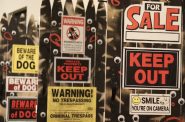 May 30th, 2024 by Annie Raab
May 30th, 2024 by Annie Raab
-
5 Huge Rainbow Arcs Coming To Downtown
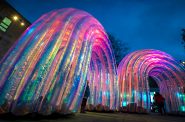 Apr 29th, 2024 by Jeramey Jannene
Apr 29th, 2024 by Jeramey Jannene
-
Exhibit Tells Story of Vietnam War Resistors in the Military
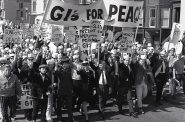 Mar 29th, 2024 by Bill Christofferson
Mar 29th, 2024 by Bill Christofferson



